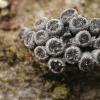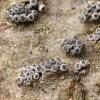
24-12-2025 17:08
Hulda Caroline HolteHello, I have found this propoloid ascomycete on

21-12-2025 09:32
Hello.A tiny ascomycete found embedded in wood in

21-12-2025 21:32
Pol DebaenstHello, Garden, Burgweg 19, Veurne, BelgiumOn 10/1

22-12-2025 23:38
Patrice TANCHAUDBonsoir, récolte sur un mur en pierre, apothéci

22-12-2025 00:47
Patrice TANCHAUDBonsoir, récolte à proximité du milieu dunaire
Clusters of small fungi on bark of Alnus
Dmitry Gavryushin,
21-12-2006 18:36
Dmitry Gavryushin,
21-12-2006 18:37
Dmitry Gavryushin,
21-12-2006 18:38
Dmitry Gavryushin,
21-12-2006 18:38
Jacques Trimbach,
21-12-2006 21:15
Re:Clusters of small fungi on bark of Alnus
cf. Tympanis alnea
Dmitry Gavryushin,
21-12-2006 21:33
Re:Clusters of small fungi on bark of Alnus
Many thanks Jacques, I think you are quite right. I have also found out that it occurs on Duschekia fruticosa (Betulaceae) in Taimyr Peninsula (Checklist of fungi and lichenicolous fungi of the Russian Arctic, http://www.binran.ru/infsys/ra_fun/ ).
Hans-Otto Baral,
21-12-2006 22:42

Re:Clusters of small fungi on bark of Alnus
Yes that´s a Tympanis. In the case you find living asci (in a section) then you see that the conidia are aggregated in 8 roundish balls in the upper half of the ascus, and so they are ejected. But when you kill the asci then this peculiar arrangement is completely distorted and the conidia fill the whole ascus.
Zotto
Zotto
Dmitry Gavryushin,
22-12-2006 08:40
Re:Clusters of small fungi on bark of Alnus
Thanks a lot for your comment Zotto. It's said in Nordic Macromycetes that there's another sp. on Alnus, T. hysterioides, but I think it would be difficult to say whether it's T. alnea or T. hysterioides.
Hans-Otto Baral,
22-12-2006 22:18

Re:Clusters of small fungi on bark of Alnus
Tympanis is a very difficult genus. The best paper I know is that from Ouelette & Pirozynski. To identify species it is necessary to study the ascospores from which the conidia emerge (septation, germ tubes), which are rather difficult to see within the premature asci - when asci are dead then only by staining.



